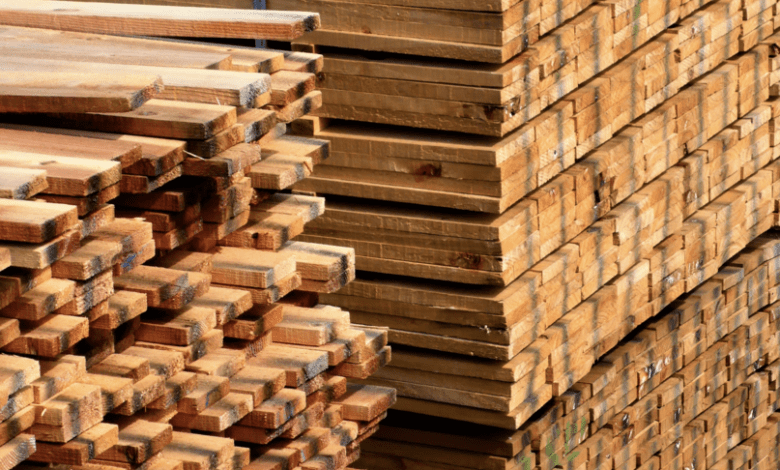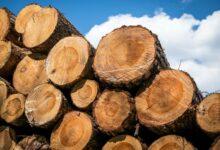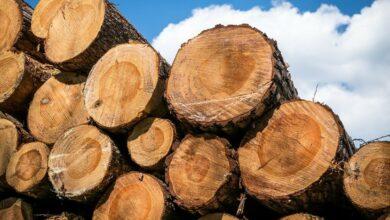
Top 15 Timber-Producing Countries in Asia
Top 15 Timber-Producing Countries in Asia – Asia is home to some of the world’s largest timber-producing countries. With its vast forests and thriving timber industry, Asia accounts for a significant portion of the global timber supply. Timber has long been an important resource across Asia, providing materials for construction, fuel for energy, and supporting local livelihoods.Top 15 Timber-Producing Countries in Asia
This article will provide an overview of the top 15 timber-producing nations in Asia. For each country, key details will be provided including total area of forest coverage, major timber species harvested, volume of timber production, and geographic location of major forest areas. Examining these leading timber producers provides insight into forestry practices and the timber economy across the diverse landscapes of Asia.
👉 Relocate to Canada Today!
Live, Study and Work in Canada. No Payment is Required! Hurry Now click here to Apply >> Immigrate to CanadaTop 15 Timber Producing Countries in Asia Are:
1. China
– Total forest area: 208 million hectares
– Major species: pine, fir, larch, bamboo
– Annual timber production: 470 million cubic meters
– Key forest areas: northeast, southwest and southeast regions
As the world’s leading timber producer, China harvests a tremendous amount of timber each year. Softwoods like pine and fir are most abundant, used extensively for construction within China. The forestry industry is centralized under state ownership. Intensive planting and harvesting enables China’s large timber output.
Read Also: Top 15 Nutritious Fruit Juices in Nigeria
2. India
– Total forest area: 70 million hectares
– Major species: sal, teak, bamboo
– Annual timber production: 425 million cubic meters
– Key forest areas: Madhya Pradesh, Maharashtra, Orissa
India contains a diversity of forest types, from sal in the north to teak in the south. Fast-growing bamboo is also widely cultivated. India’s substantial timber industry supplies wood for housing, furniture and fuel. Strict regulations now guide forestry, after past problems with illegal logging and overharvesting.
3. Indonesia
– Total forest area: 91 million hectares
– Major species: meranti, teak, ebony
– Annual timber production: 265 million cubic meters
– Key forest areas: Sumatra, Kalimantan, Papua
Indonesia possesses some of Asia’s largest expanses of tropical forest, full of valuable hardwoods. Major products include plywood, pulp for paper and sawn timber. However, weak governance has enabled illegal logging and land clearing for palm oil and timber plantations to proliferate in recent decades.
4. Japan
– Total forest area: 25 million hectares
– Major species: cryptomeria, hemlock, cedar
– Annual timber production: 236 million cubic meters
– Key forest areas: Hokkaido, Tohoku, Kyushu
👉 Relocate to Canada Today!
Live, Study and Work in Canada. No Payment is Required! Hurry Now click here to Apply >> Immigrate to CanadaWhile relatively small in area, Japan’s timber industry is highly productive and lucrative. The country maintains substantial commercial plantations of cryptomeria and other softwoods. Strict management enables high yields to supply domestic needs, as Japan imports over 80% of its lumber.
Read Also: Top 15 Fruit Juice Flavours in Nigeria
5. Vietnam
– Total forest area: 14 million hectares
– Major species: pine, tropical hardwoods
– Annual timber production: 135 million cubic meters
– Key forest areas: Central Highlands, Mekong Delta
Ongoing logging and land conversion place heavy pressure on Vietnam’s natural forests. Pine plantations supply most of Vietnam’s raw timber. Luxury tropical woods are illegally traded from protected areas. The government aims to improve sustainability through certification schemes.
6. Thailand
– Total forest area: 16 million hectares
– Major species: teak, Dipterocarps
– Annual timber production: 120 million cubic meters
– Key forest areas: Northern and western regions
Thailand’s timber industry focuses on teak from natural forests and rubberwood from plantations. Logging bans have shifted wood production towards smaller trees and non-native species. Thailand now imports large quantities of timber from other Southeast Asian nations.
7. Myanmar
– Total forest area: 29 million hectares
– Major species: teak, pine, other hardwoods
– Annual timber production: 100 million cubic meters
– Key forest areas: Sagaing, Tanintharyi, Shan State
Myanmar possesses some of the largest untouched forests in mainland Southeast Asia, with abundant teak and other woods. However, weak governance has permitted illegal logging and corruption within the timber sector. Reforming forest policies and enforcement remains a major challenge.
8. Pakistan
– Total forest area: 4 million hectares
– Major species: conifers like chir, deodar, spruce
– Annual timber production: 92 million cubic meters
– Key forest areas: Upper Indus basin, Lower Himalayan range
Pakistan’s timber supplies come mainly from coniferous forests in the mountains of northern provinces. Demand for fuelwood and timber frequently exceeds legal sustainable harvests. Despite reforestation programs, illegal logging persists, prompting biodiversity declines.
Read Also: Top 15 Polo Shirt Brands in Nigeria
9. Malaysia
– Total forest area: 19 million hectares
– Major species: meranti, keruing, teak
– Annual timber production: 65 million cubic meters
– Key forest areas: Sarawak, Sabah, Peninsular Malaysia
Malaysia exports valuable tropical hardwoods for lumber and plywood. However, past overexploitation harmed natural forests. Log export bans incentivized more local processing but also illegal overharvesting. Better enforcement of sustainable forestry is now increasing.
10. Philippines
– Total forest area: 7 million hectares
– Major species: dipterocarps, molave, pine
– Annual timber production: 57 million cubic meters
– Key forest areas: Mindanao, Visayas, northern Luzon
The Philippines suffers from extensive deforestation, leaving few large intact forests. Logging bans protect remaining natural forests. Fast-growing pine and imported species supply most of the raw timber. More sustainable practices are slowly being adopted.Romantic love message
11. North Korea
– Total forest area: 7 million hectares
– Major species: pine, oak, poplar, larch
– Annual timber production: 40 million cubic meters
– Key forest areas: Ryanggang, Jagang, Hamgyong provinces
Outside observers have limited data on North Korea’s timber industry. Coniferous forests cover much of the country’s upland areas. Forest degradation is a severe issue, with illegal logging, fuelwood collection and natural disasters all causing damage.Information guide Nigeria
12. Nepal
– Total forest area: 4 million hectares
– Major species: sal, chir, fir, hemlock
– Annual timber production: 37 million cubic meters
– Key forest areas: Terai, Mid-Hills, Siwalik regions
Nepal’s forestry sector remains underdeveloped despite the prevalence of wood as the main construction material. Poverty drives illegal logging for incomes. Community-managed forestry programs aim to improve sustainability and support livelihoods.
Read Also: 15 Best Free Theology Degrees for Seniors
13. Laos
– Total forest area: 16 million hectares
– Major species: rosewood, teak, mahogany
– Annual timber production: 34 million cubic meters
– Key forest areas: Southern and eastern areasNYSC Portal
Laos has extensive forest resources but limited governance over the timber trade. Much logging remains illegal and linked to Vietnam. The long-term viability of Laos’ timber industry remains uncertain due to unchecked overexploitation.JAMB portal
14. Sri Lanka
– Total forest area: 2 million hectares
– Major species: teak, eucalyptus, pine
– Annual timber production: 32 million cubic meters
– Key forest areas: Southwestern region
Sri Lanka’s natural forests have been heavily impacted by logging and land conversion. Plantations now supply most timber needs, with teak and imported fast-growing species cultivated in state forests. Better management practices are improving plantation productivity.Good morning My Love Message
15. Cambodia
– Total forest area: 8 million hectares
– Major species: beng, Neang Nuon
– Annual timber production: 30 million cubic meters
– Key forest areas: Southwest, northern and eastern regions
Rampant illegal logging has decimated Cambodia’s forests, with rare woods smuggled into Vietnam and China. Cambodian timber mainly supplies domestic needs. Forest protection efforts seek to curb illegal logging through trade restrictions, law enforcement and community forestry.
Read Also: Top 15 Fruit Juice Flavours in Nigeria
Conclusion
Asia’s vast forests support immense levels of timber production to meet regional and global demand. However, past overexploitation highlights the need for better governance and sustainability. With improved forestry programs and practices, Asian nations can balance timber production with forest conservation and local community needs. Though challenges remain, a future of well-managed and productive forests is attainable throughout Asia.
Check JAMB RESULT
Check and Confirm: How much is Dollar to Naira





